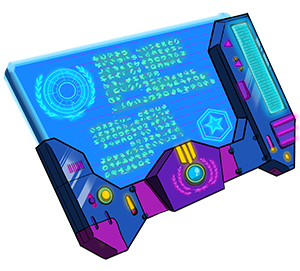Ready to level up your audience reach and revenue? There’s no cheat code needed. The gaming industry has a unique opportunity to attract new players and increase earnings by producing games for regions around the world. However, for these games to be successful in foreign markets, it’s important that you invest in localizing them properly.
Localization allows gamers across the globe to enjoy your game in their native dialect. It can be complex and involves more than simply translating text. The process transforms the game and player experience, making it relevant to the target market. Poor translations can lead to inadvertent humor, or worse, unintentional offense. That’s why when it comes to localization, quality matters.
Once you decide to localize your video games to reach global audiences, it will be time to decide on the exact content to localize and target languages based on your overall goals. When in doubt, you can request assessments from your publisher or a linguistic provider. Localization projects vary in complexity and cost, but with insight into the projected size, category, and market languages, your language service provider can better prepare a comprehensive quote for you. After all, there’s nothing more frustrating than discovering your predefined budget is not enough halfway through the process.
Some Determining Factors to Consider in a Localization Project Cost

- Who conducts the localization
The biggest driver of cost depends on who you choose to use for the localization. From an in-house team to freelancers, machine translations to professional language service providers, these solutions are available at various price points. Cost can be closely tied to quality, however, not in every situation. Keep this in mind when evaluating options. Be open to investing more in quality, but also feel free to ask what quality measures are included in the quoted service.
- The target market and language(s)
We all know that language is nuanced. Many markets have more than one prominent language and/or dozens of dialects. A project’s scope is dependent on the number of languages and dialects that are being localized. Additionally, some languages are more expensive than others. This can be due to the country’s cost of living, the general number of subject matter experts, or the availability of these skilled linguists in the target market.
- Timeline
Deadlines will significantly impact the cost of a project. There’s a possibility that the cost will be higher when there’s a quick turnaround. Additionally, you may need to give your project time for additional research and quality assurance reviews. A notorious example of quality assurance is in the creation of Call of Duty: Modern Warfare 2. The game was released riddled with errors. So much so that the company had to rerelease a remastered version of the game to fix the translation errors resulting in lost profits. Taking more time to properly research and localize might make the difference between winning or realizing it’s game over.
- Technicality
Your subject matter will impact a project’s price point. For example, a game with medical content full of technical jargon will require additional terminology research and cost more than generic scripts.
- Content type
You can get many types of content translated within your game, all requiring varying levels of effort that need just the right linguist. The five main groups in video games are on-screen text, on-screen art, cinematics, marketing, and legal.
For example, The Sims developed their language Simlish to avoid doing numerous voice-overs of simple lines that could have become repetitive for the players. However, they still chose to localize the game into 18 different languages. That’s one way of choosing where to put your localization investment.

- Supportive assets
From time to time, additional assets must be created to support and sustain successful localization. These assets can include a style guide, glossary, or term base. Not only do they provide clarity for teams across markets, but these resources help with overall consistency and quality.
- Team size
The team assigned to the localization project will impact the process and steps in the workflow. For greater quality, the optimal team would include a translator, an editor, and an LQA specialist. If you work with a Language Service Provider, a project manager will be added to the workflow so that you don’t have to coordinate all parties and assets involved.
Conclusion
By properly adapting your game to diverse audiences, you’ll demonstrate genuine cultural respect and appreciation for regions worldwide. We know that finding the solution that best fits your localization needs can feel overwhelming. Remember that the costs for your project can vary depending on your exact requirements. Localization should never be an afterthought and should start with intentionality. Plan in advance and set aside a budget early in the development process.
In addition to budget management, localizing in the developing stages will positively impact your overall process and the quality of deliverables. The linguistic team has room to flag possible problems regarding UX as well as any inaccurate content for various cultures. This way, you’ll be in the best position to set realistic launch dates and release a better product into the gaming world.



